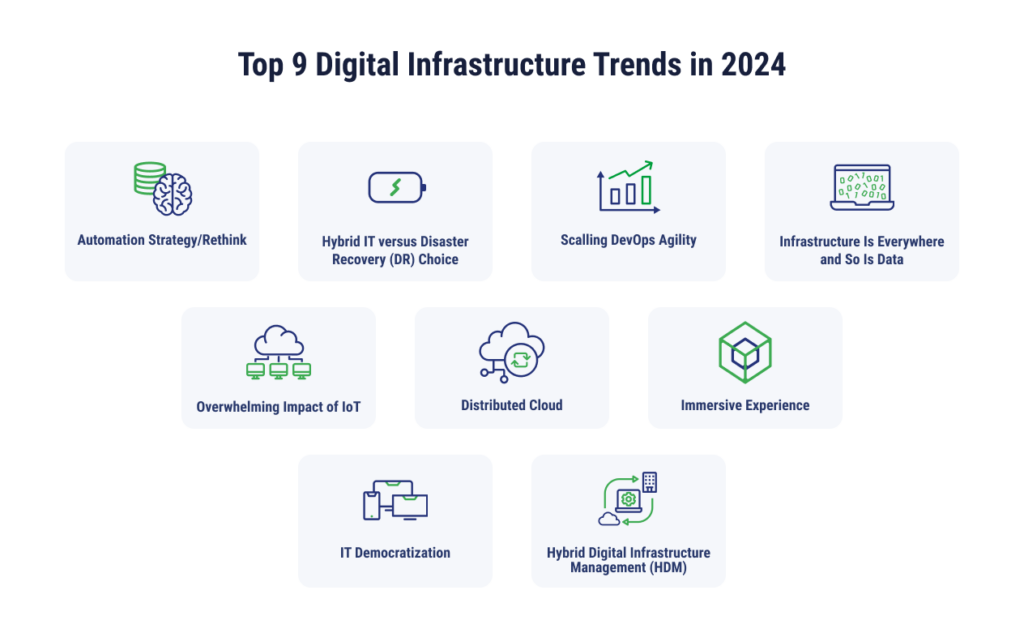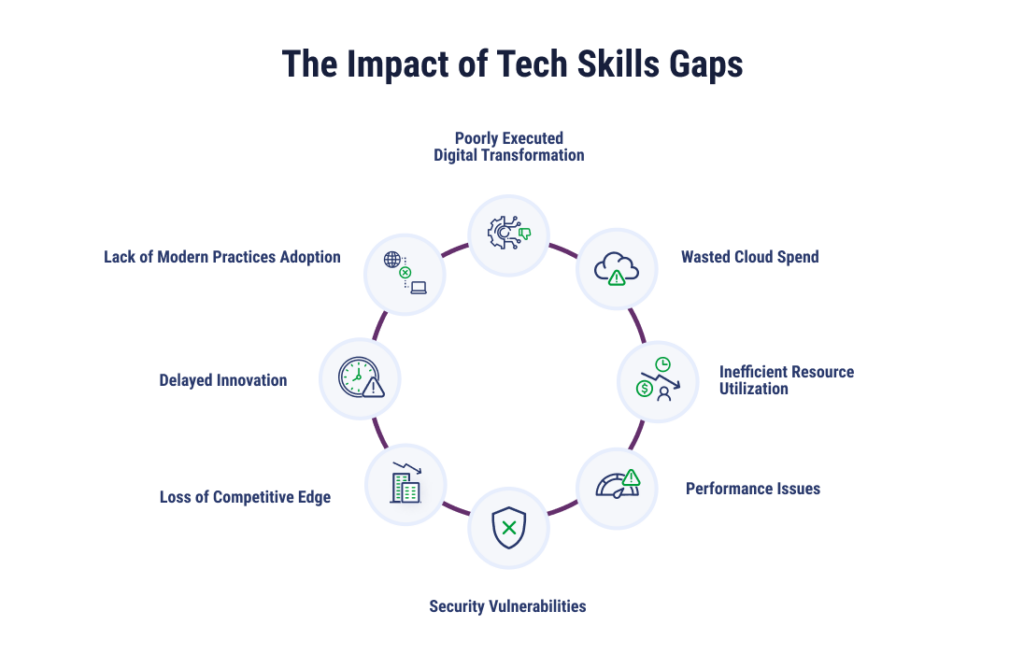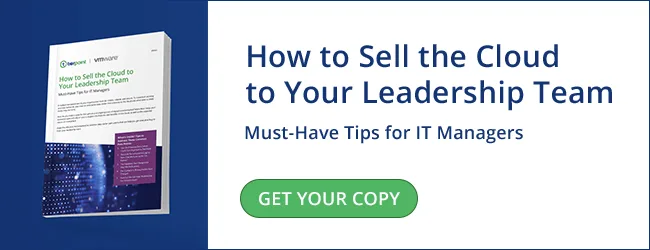
Digital technologies and tools can only grow as fast as the infrastructure supports. Emerging technologies and evolving user expectations have led to a skyrocketing increase in digital infrastructure demand. Several key trends have emerged as a result, including growing investments in cybersecurity, a greater focus on high-performance computing, and an increase in artificial intelligence (AI) and the computing that supports it.
We’ll cover what we expect to see next year, and what businesses can do to stay updated on the latest digital infrastructure trends.
What is Digital Infrastructure?
Digital infrastructure encompasses the physical and virtual components vital for creating, storing, processing, and transmitting data. On the physical side, it includes essential elements like data centers, telecommunication networks, and a wide array of computing devices. The virtual side involves the intricate network of data, software applications, and interconnected systems that facilitate seamless communication and operations. Additionally, cloud infrastructure, which offers scalable and on-demand computing resources, has become a cornerstone of modern digital frameworks as it enables:
- Innovation
- Connectivity
- Operational efficiency
As more businesses take on and complete digital transformation initiatives, the role and significance of digital infrastructure, including cloud services, continues to become more pronounced.
The Forecast of Digital Infrastructure
Gartner predicts that worldwide IT spending will grow by 8% in 2024, reaching $5.1 trillion. While generative AI will contribute to increased spending in the digital infrastructure market, it’s playing a more important role in supporting IT growth overall in 2024. Public cloud service spending is also forecasted to grow by 20.4%.
Some increased spending will also come from hesitation in 2023, as 2024 and 2025 may see rollover from unused budgets.
Emerging Trends in Digital Infrastructure
As with data centers and cloud computing, the digital infrastructure landscape is set to see significant trends in 2024. Here’s what we’re keeping an eye on in the new year.

More Investment in Cybersecurity and Data Privacy
While AI provides more opportunities for innovation, automation, and data analysis, it also presents new concerns for cybersecurity issues: it has the potential to generate malware and ransomware, and strong AI has the capacity to cause more human-like threats now and in the future. Existing attack vectors, such as phishing, will also be enhanced by AI.
According to Gartner, 80% of CIOs plan to increase spending on cybersecurity and information security in 2024. Advanced security solutions, identity and access management (IAM) systems, and data encryption techniques will be some key investments next year.
Rise in 5G and Edge Computing
The 5G edge computing market is predicted to grow by 49.8% from 2023 to 2030. Both 5G and edge computing can contribute to lower latency, increased connectivity, and faster data transmission, improving the user experience. Edge computing complements 5G through real-time data processing and analysis by bringing computing power closer to the source of the data. It can also better accommodate Internet of Things (IoT) devices, another growing market. IoT devices are available on the consumer level, including smart watches and lights, as well as on the infrastructural level, all the way up to building smart cities.
High-Performance Computing Will Gain More Traction
High-performance computing (HPC) can handle more complex tasks compared to average cloud computing. AI, machine learning (ML), and scientific simulations are greatly aided by HPC. As these more complex computing systems increase in popularity, businesses will need to change their infrastructure to accommodate larger workloads. High-density data centers using graphic processing units (GPUs) can facilitate high-performance computing as they’re able to support the higher power and cooling demands of these resource-intensive GPU workloads.
Greater Focus on Optimization and Restructuring
As companies increasingly recognize the importance of efficient resource utilization, there’s a greater focus on fine-tuning and maximizing the potential of cloud resources. This trend is propelled by three objectives:
- To enhance overall performance
- To manage costs
- To reduce cloud waste
In the next year, businesses plan to invest considerable time and effort in evaluating their existing cloud architecture, identifying redundancies, and streamlining operations. By embracing this trend, companies aim to create leaner, more agile digital infrastructures that can seamlessly adapt to the changing demands of the modern business landscape.
Increase in ML and AI-Driven Automation and Analysis
By 2027, the AI market is set to reach $407 billion. While much of the recent growth in AI has stemmed from generative AI tools like ChatGPT, self-driving cars will also be another large consumer trend with a predicted 75% of cars globally to be autonomous by 2040.
Additionally, ML and AI can transform business processes and improve end-user satisfaction by performing a wide variety of functions, such as personalizing customer experiences, automating repetitive tasks, and identifying patterns and areas of growth. Businesses can even create self-healing networks or enable intelligent infrastructure management systems through AI/ML technologies.
Growth in Quantum Computing
Classical computers have limits, and this is where quantum computing comes in. Quantum computing employs the principles of quantum mechanics to solve problems that are not possible on classical computers. While the technology is still in its early stages, quantum computing may help tackle issues in financial modeling, materials science, or even drug discovery in the healthcare industry.
Bigger Plans to Close Skills Gaps
The tech skills gap can feel like an insurmountable chasm. Currently, there are only 65 workers able to fill the roles for every 100 tech jobs. By 2030, it’s estimated that there will be a shortage of 85 million tech workers, which could cause $8 trillion in annual revenue losses. Without intervention, the digital divide with tech skills will only worsen and organizations will feel the impact.

In response to this, organizations will need to invest in workforce development and internal training to upskill current staff and bring in new talent. AI/ML tools can fill in other gaps, and augmenting current staff with external experts can also help companies bring in the necessary cloud skills to support digital transformation projects.
More Steps to Enhance Global Connectivity
Despite being more connected than ever, 33% of the global population is still offline. In a concerted effort to bridge the digital divide, considerable strides are anticipated in enhancing global internet connectivity. Satellite-based internet access, fiber optic networks, and terrestrial wireless technologies can improve network resilience and expand access to underserved areas.
Heightened Focus on Sustainable Initiatives
The environmental impact of digital infrastructure is on the minds of many organizations, whether it’s through regulatory requirements or simply a desire to lessen their footprint. Sustainable initiatives, including renewable energy and liquid cooling, are two energy-efficient technologies data centers may implement.
Keep Up with Digital Infrastructure and IT Trends
No one can say with complete certainty what the next year will hold, but organizations should look to digital infrastructure and IT experts to keep up with the trends and understand what might be next for their business. To stay up-to-date in 2024 and beyond, check out TierPoint’s podcast, Cloud Currents.
Ready to begin your digital transformation in 2024? Download our guide on How to Sell the Cloud to Your Leadership Team, which includes tips on how to make a case for the upfront and ongoing costs of digital transformation.

